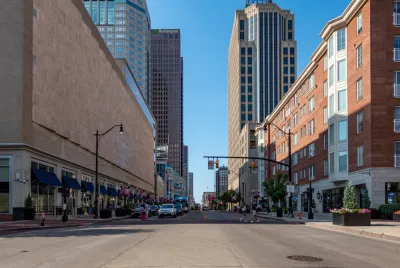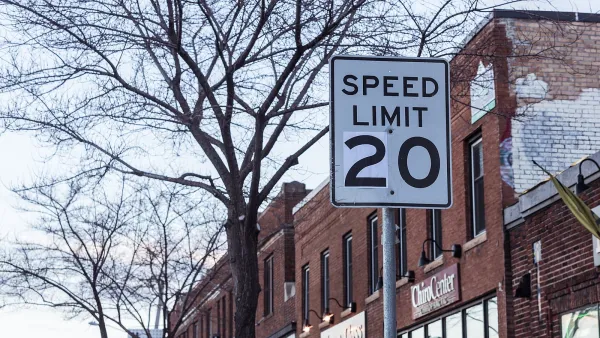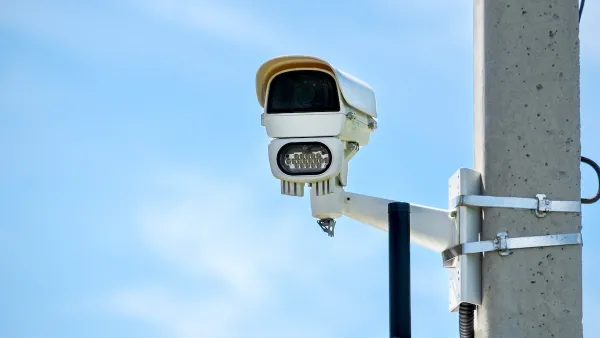The city council will vote on a proposal to lower speed limits to 25 miles per hour to improve safety and make downtown more walkable and welcoming to pedestrians.

Downtown Columbus could see its speed limit lowered to 25 miles per hour if the city council approves a proposal at this Tuesday’s meeting, reports Mark Ferenchik in The Columbus Dispatch.
According to Ferenchik, “The Downtown streets where speed limits would be limited to 25 mph are in an area bounded by Interstate 670 to the north, Interstate 71 to the east, Interstates 70 and 71 to the south, and the Scioto River and Neil Avenue to the west,” as well as part of the Scioto Peninsula.
The new rule would lower the speed limit from 35 miles per hour, a decrease that is shown to drastically reduce the risk of serious injury and death in crashes involving pedestrians. “Officials in Austin, Texas, studied intersections in that city where similar changes were made and found an 18% reduction year-to-year in the number of pedestrians hit by left-turning vehicles at Downtown intersections.” The plan must be approved by the Ohio Department of Transportation (ODOT) to move forward.
As part of its Vision Zero goal, the city also plans to adjust traffic light timing to slow traffic and change light timing at some intersections to give pedestrians a head start when crossing. The changes would align with the strategic plan developed by the Columbus Downtown Development Corporation, which calls for a more walkable downtown.
FULL STORY: Columbus City Council considers setting speed limit on all Downtown streets at 25 mph

National Parks Layoffs Will Cause Communities to Lose Billions
Thousands of essential park workers were laid off this week, just before the busy spring break season.

Retro-silient?: America’s First “Eco-burb,” The Woodlands Turns 50
A master-planned community north of Houston offers lessons on green infrastructure and resilient design, but falls short of its founder’s lofty affordability and walkability goals.

Delivering for America Plan Will Downgrade Mail Service in at Least 49.5 Percent of Zip Codes
Republican and Democrat lawmakers criticize the plan for its disproportionate negative impact on rural communities.

Test News Post 1
This is a summary

Test News Headline 46
Test for the image on the front page.

Balancing Bombs and Butterflies: How the National Guard Protects a Rare Species
The National Guard at Fort Indiantown Gap uses GIS technology and land management strategies to balance military training with conservation efforts, ensuring the survival of the rare eastern regal fritillary butterfly.
Urban Design for Planners 1: Software Tools
This six-course series explores essential urban design concepts using open source software and equips planners with the tools they need to participate fully in the urban design process.
Planning for Universal Design
Learn the tools for implementing Universal Design in planning regulations.
EMC Planning Group, Inc.
Planetizen
Planetizen
Mpact (formerly Rail~Volution)
Great Falls Development Authority, Inc.
HUDs Office of Policy Development and Research
NYU Wagner Graduate School of Public Service





























